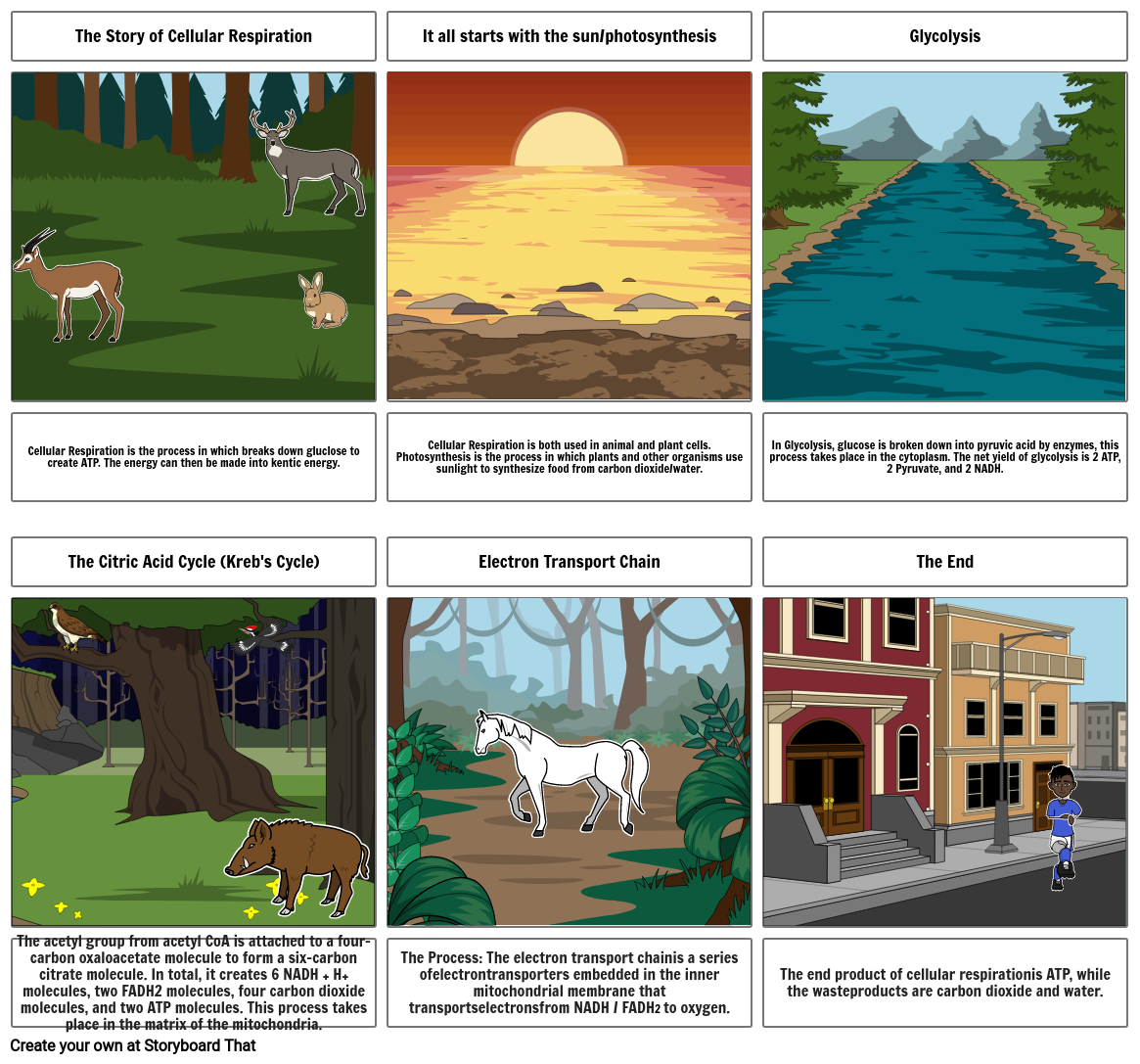Unknown Story

טקסט Storyboard
- The Story of Cellular Respiration
- It all starts with the sun/photosynthesis
- Glycolysis
- Cellular Respiration is the process in which breaks down gluclose to create ATP. The energy can then be made into kentic energy.
- The Citric Acid Cycle (Kreb's Cycle)
- Cellular Respiration is both used in animal and plant cells. Photosynthesis is the process in which plants and other organisms use sunlight to synthesize food from carbon dioxide/water.
- Electron Transport Chain
- In Glycolysis, glucose is broken down into pyruvic acid by enzymes, this process takes place in the cytoplasm. The net yield of glycolysis is 2 ATP, 2 Pyruvate, and 2 NADH.
- The End
- The acetyl group from acetyl CoA is attached to a four-carbon oxaloacetate molecule to form a six-carbon citrate molecule. In total, it creates 6 NADH + H+ molecules, two FADH2 molecules, four carbon dioxide molecules, and two ATP molecules. This process takes place in the matrix of the mitochondria.
- The Process: The electron transport chain is a series of electrontransporters embedded in the inner mitochondrial membrane that transports electrons from NADH / FADH2 to oxygen.
- The end product of cellular respiration is ATP, while the waste products are carbon dioxide and water.
נוצרו מעל 30 מיליון לוחות סיפור

